Burning questions remain over Europe’s waste incinerators
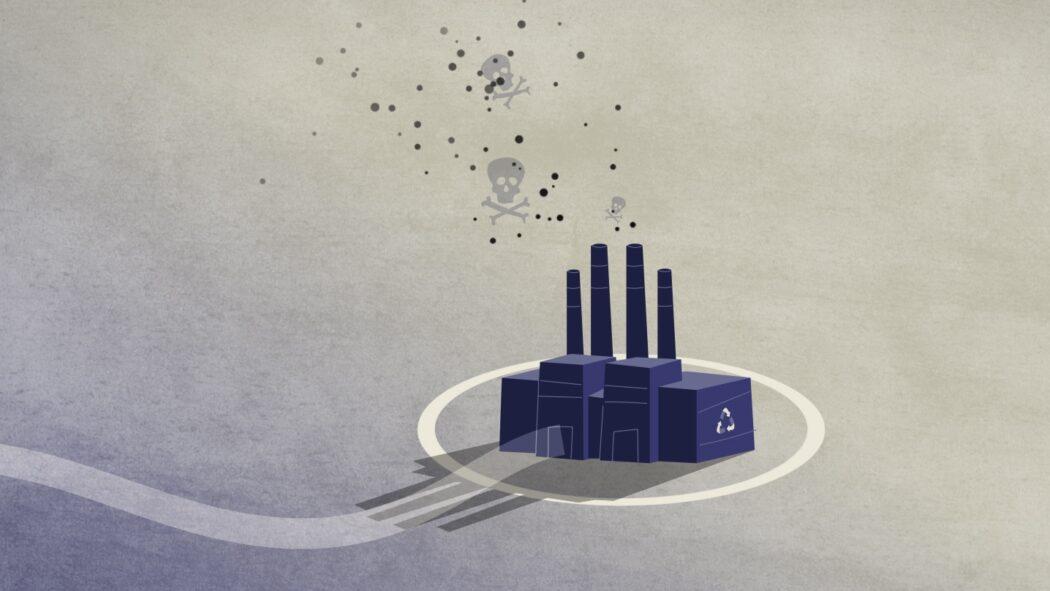
Alexia Barakou
Most plastics are either too contaminated to recycle or become so after a few recycling loops. They end up being incinerated, releasing a cocktail of toxic chemicals - as well as CO2. Modern systems have advanced but experts warn complacency is wrong.
One of the scariest but less noticed consequences of the energy crunch, last autumn, was an emergency measure considered by the German government. It allowed waste incinerators to function without filters, due to a looming shortage of the necessary chemicals. This nightmare was averted, but the vulnerability of a waste-disposal system that many consider as the golden standard, became apparent.
A staple on protest placards across Europe in the 1990s, environmental concerns around waste incineration have largely drifted away as modern systems eased pollution fears. A big part of the 30 million tonnes of plastic waste generated every year in Europe is incinerated, and most nations burn more plastics now than a decade ago. This is set to rise as landfilling is abandoned and dozens of new plants are planned in Poland and Czech Republic.
Energy and heat production is seen as a concrete benefit for local communities, although the amounts are relatively small (2.5 per cent of Europe’s energy comes from incinerators). When incinerated, plastics are worse climate-killers than coal (2.9 tonnes of CO2 per tonne versus 2.7 tonnes of C02 per tonne of coal).
A staple on protest placards across Europe in the 1990s, environmental concerns around waste incineration have largely drifted away as modern systems eased pollution fears. A big part of the 30 million tonnes of plastic waste generated every year in Europe is incinerated, and most nations burn more plastics now than a decade ago. This is set to rise as landfilling is abandoned and dozens of new plants are planned in Poland and Czech Republic.
Energy and heat production is seen as a concrete benefit for local communities, although the amounts are relatively small (2.5 per cent of Europe’s energy comes from incinerators). When incinerated, plastics are worse climate-killers than coal (2.9 tonnes of CO2 per tonne versus 2.7 tonnes of C02 per tonne of coal).
And experts warn that other ecological concerns remain. “What I know is that you have to keep a very close eye on the operators of waste incineration plants,” says Günter Dehoust, senior researcher at the Öko-Institut in Germany, home to one-fifth of Europe’s 500 or so waste incinerators.
Investigate Europe found three gaping, EU-sized loopholes that can allow incinerator pollution to remain hidden. The German government was actively involved in creating at least one of these loopholes.
The first centres on how incinerator pollution is measured: mostly in stable conditions, rarely during startups and shutdowns, even though it is widely documented that these are the instances where most pollution can be emitted. When the EU-wide guidelines for waste incineration were last revised, in 2019, something remarkable happened.
“In our working group, we fought for dioxin and furan emissions to be measured continuously across Europe,” says a source present in the discussions.
“The French and Belgian governments also supported this. The German Federal Environment Agency ultimately blocked this.” Dioxins and furans are probable carcinogens emitted mainly when plastics containing chlorine, like PVC, are incinerated. When supplied with the right chemicals, modern filters capture most dioxins, a great improvement from past performance. Marcus Gleis, head of the German delegation, says that relevant data was shared late by French representatives. “There was no time to examine it,” he says.
Investigate Europe found three gaping, EU-sized loopholes that can allow incinerator pollution to remain hidden. The German government was actively involved in creating at least one of these loopholes.
‘False perception of safety’
The first centres on how incinerator pollution is measured: mostly in stable conditions, rarely during startups and shutdowns, even though it is widely documented that these are the instances where most pollution can be emitted. When the EU-wide guidelines for waste incineration were last revised, in 2019, something remarkable happened.
“In our working group, we fought for dioxin and furan emissions to be measured continuously across Europe,” says a source present in the discussions.
“The French and Belgian governments also supported this. The German Federal Environment Agency ultimately blocked this.” Dioxins and furans are probable carcinogens emitted mainly when plastics containing chlorine, like PVC, are incinerated. When supplied with the right chemicals, modern filters capture most dioxins, a great improvement from past performance. Marcus Gleis, head of the German delegation, says that relevant data was shared late by French representatives. “There was no time to examine it,” he says.
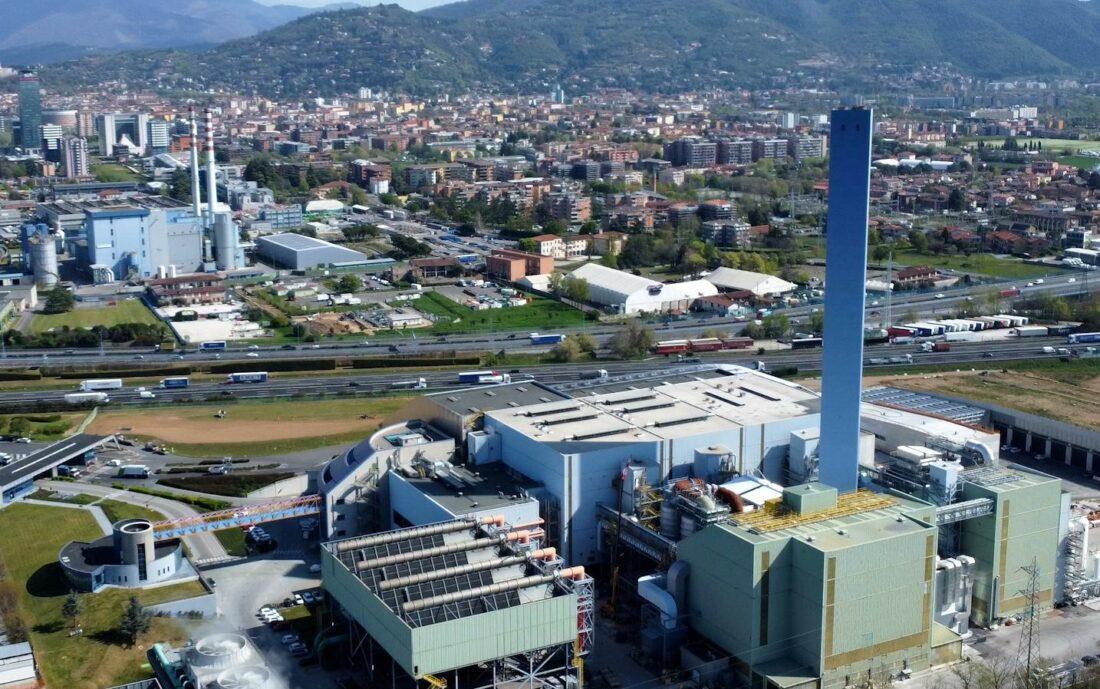
An incinerator facility in northern Italy. There are around 500 plants across Europe.Lorenzo Buzzoni
“The industry is trying to measure during shutdowns,” says Abel Arkenbout, chief toxicologist at the Netherlands-based ToxicoWatch Foundation. “But when conditions are not normal, instruments are not capable of measuring. It is irresponsible to present people with a false perception of safety when this is based on imperfect measurements and measurement methods, which do not function properly at key moments of incomplete combustion processes.”
Dr Ella Stengler, managing director of the European umbrella organisation for incinerator plants, CEWEP, says pollution is adequately measured. “We are very proud of the environmental performance of Waste to Energy [WtE] plants in Europe”.
Secondly, only a few chlorinated pollutants are measured. PFAS (toxic compounds containing fluorine, also known as ‘forever chemicals’ because they don’t break down) are not measured, despite every waste incinerator in Europe being listed among presumed PFAS contamination sites. “Many of the products we use in our everyday life contain PFAS and, when these products become waste, there are not many treatment routes available that would avoid spreading these substances.” Stengler adds. “There is no certified measuring method for PFAS yet.”
And thirdly, regulations do not mandate monitoring the effects of incinerator pollution on living organisms around incinerators, or products like milk and eggs. Tests are performed only to detect the release of a limited range of chemicals in the environment. This could widely underestimate the real effects of toxic cocktails accumulating in cells over time.
Dr Ella Stengler, managing director of the European umbrella organisation for incinerator plants, CEWEP, says pollution is adequately measured. “We are very proud of the environmental performance of Waste to Energy [WtE] plants in Europe”.
Monitoring hazards
Secondly, only a few chlorinated pollutants are measured. PFAS (toxic compounds containing fluorine, also known as ‘forever chemicals’ because they don’t break down) are not measured, despite every waste incinerator in Europe being listed among presumed PFAS contamination sites. “Many of the products we use in our everyday life contain PFAS and, when these products become waste, there are not many treatment routes available that would avoid spreading these substances.” Stengler adds. “There is no certified measuring method for PFAS yet.”
And thirdly, regulations do not mandate monitoring the effects of incinerator pollution on living organisms around incinerators, or products like milk and eggs. Tests are performed only to detect the release of a limited range of chemicals in the environment. This could widely underestimate the real effects of toxic cocktails accumulating in cells over time.
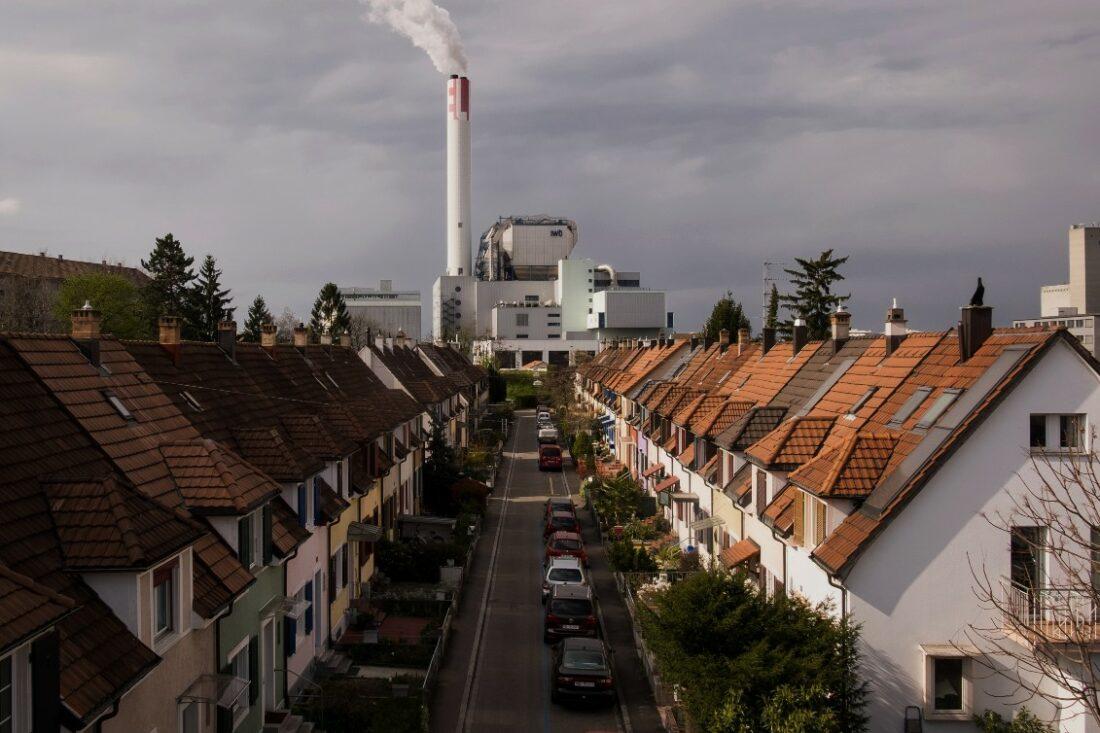
An incineration plant looms over a street in Basel, it is one of 30 facilities in Switzerland.Shutterstock
By biomonitoring eggs of backyard chickens, mosses and pine needles around incinerators in several European countries, Arkenbout detected serious pollution and eggs with excessive dioxins. “When dioxins are found in the surroundings of a WtE plant there is no correlation with the plant’s emissions.” says Stengler, pointing to an industry report detailing many other dioxin sources.
Not all of Arkenbout’s work is peer-reviewed. He dismisses the criticism by inviting more people to focus on these issues: “I think that we should not be the only ones, there must be more people, more governments looking at pollution around incinerators.”
CEWEP’s Stengler says the industry is committed to transparency. “The operators are legally required to communicate data to their competent authority for compliance assessment. In turn, competent authorities are legally required to make the relevant data available to the public, it is therefore openly accessible” Yet activists have faced numerous legal battles all over Europe trying to access such data.
An example comes from Volos, a port city at the foot of the mythical Mount Pelion, in central Greece. A lush hill separates the charming city from a hundred-year old cement factory, now run by Lafarge/Holcim using 185,000 tonnes of waste as fuel every year. (This process of fueling in the production process with waste is called co-incineration).
Not all of Arkenbout’s work is peer-reviewed. He dismisses the criticism by inviting more people to focus on these issues: “I think that we should not be the only ones, there must be more people, more governments looking at pollution around incinerators.”
Activists fight for access
CEWEP’s Stengler says the industry is committed to transparency. “The operators are legally required to communicate data to their competent authority for compliance assessment. In turn, competent authorities are legally required to make the relevant data available to the public, it is therefore openly accessible” Yet activists have faced numerous legal battles all over Europe trying to access such data.
An example comes from Volos, a port city at the foot of the mythical Mount Pelion, in central Greece. A lush hill separates the charming city from a hundred-year old cement factory, now run by Lafarge/Holcim using 185,000 tonnes of waste as fuel every year. (This process of fueling in the production process with waste is called co-incineration).
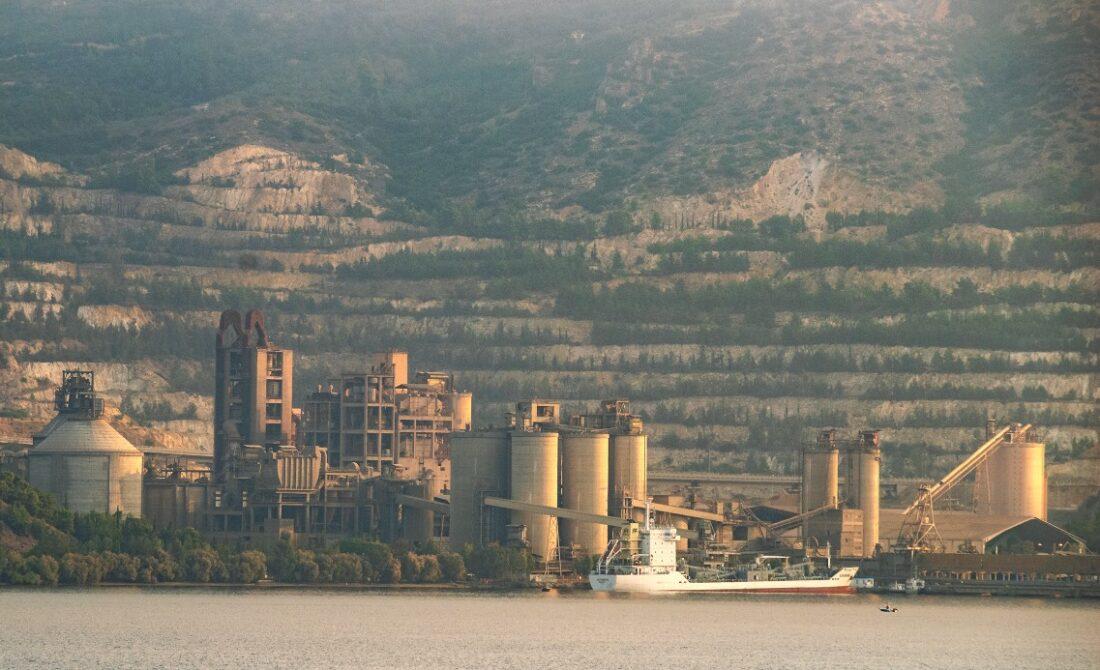
Activists argue that the Volos cement factory is linked to health concerns in the region.Shutterstock
Authorities have downplayed pollution issues for years, even though Volos has four times more strokes, especially among women, and 2.5 times more liver cancer cases than the national average. Research has shown sharp increases in hospital admissions at the exact times when particle pollution was high.
“They had been trying to portray all of us as crazy,” says cardiologist Matthaios Dramitinos, former director of Volos city hospital. There are several other sources of pollution in the city – car exhausts, fireplaces, other factories – and the exact contribution of the factory to the city’s health woes is a hotly contested topic.
After three large protests, one of which later led to the death of an activist (several others are facing court cases on civil disobedience grounds), the company agreed to publish pollution data online. But it does not include information on mercury or other heavy metals, despite mercury being a top pollution concern in cement factories. When it comes to dioxins, byproducts of incinerating plastic, the company openly shares the averages of continuous dioxin measurements on a daily basis. However, the plant has secured permission to switch to burning natural gas, rather than plastic waste, when, once a year, a certified firm takes dioxin readings.
“The use of alternative fuels is clearly a safe environmental option and technically best practice, changing the landscape in the sector, significantly accelerating Europe’s path towards climate neutrality,” a Lafarge/Holcim spokesperson said.
“They had been trying to portray all of us as crazy,” says cardiologist Matthaios Dramitinos, former director of Volos city hospital. There are several other sources of pollution in the city – car exhausts, fireplaces, other factories – and the exact contribution of the factory to the city’s health woes is a hotly contested topic.
After three large protests, one of which later led to the death of an activist (several others are facing court cases on civil disobedience grounds), the company agreed to publish pollution data online. But it does not include information on mercury or other heavy metals, despite mercury being a top pollution concern in cement factories. When it comes to dioxins, byproducts of incinerating plastic, the company openly shares the averages of continuous dioxin measurements on a daily basis. However, the plant has secured permission to switch to burning natural gas, rather than plastic waste, when, once a year, a certified firm takes dioxin readings.
“The use of alternative fuels is clearly a safe environmental option and technically best practice, changing the landscape in the sector, significantly accelerating Europe’s path towards climate neutrality,” a Lafarge/Holcim spokesperson said.
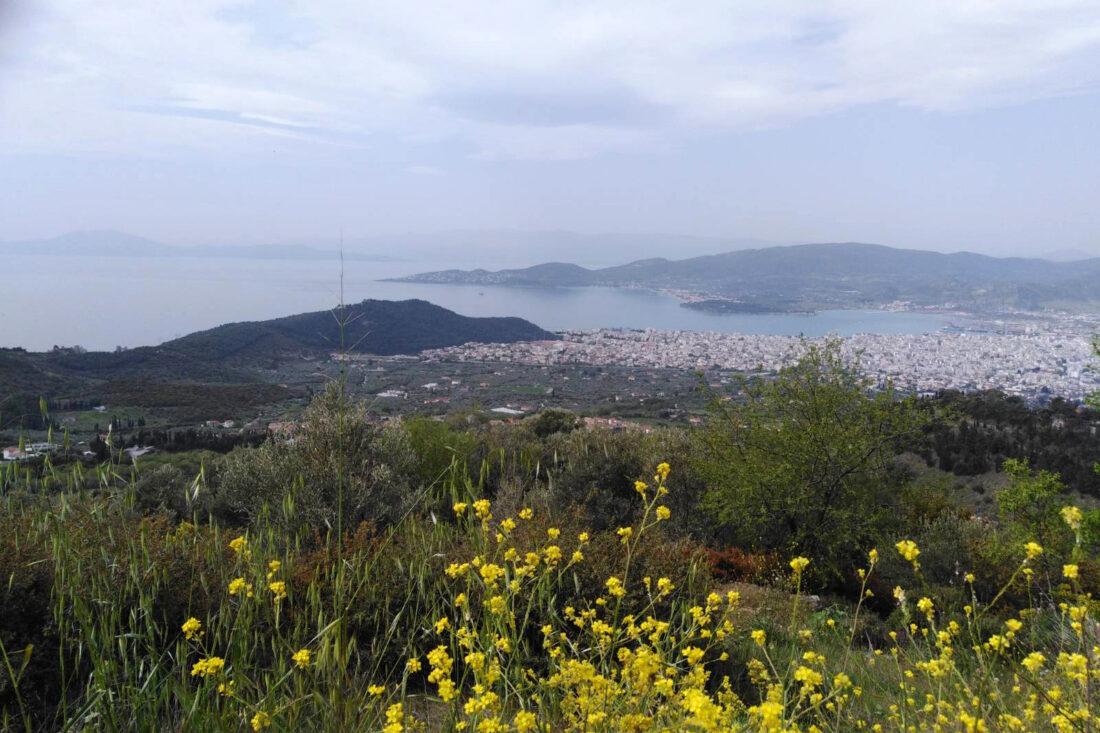
Volos, in Greece. The cement factory is located behind the hill.Eurydice Bersi
Stelios Limnios, a retired engineer and activist, says data must be compiled independently. “The provincial authorities have promised to do their own measurements since 2016,” he says. “They are intentionally delaying, because the problem will become obvious. The regional administration’s environment office declined to explain, referring questions to the head of the local administration, Dorothea Kolyndrini, who was unavailable.
“We were supposed to oversee the functioning of the plant, via a local committee of control,” Limnios adds. “The committee was never formed, and in 2019, in one of the last acts of the outgoing Syriza administration, the agreement for its establishment was quietly scrapped.”
Oversight is needed in order to control the types of waste burned. But in France a local oversight committee was not told when, in January 2023, a municipal waste plant in Nice owned by Veolia incinerated radioactive waste. The firm said it was an accident, but the risk of hazardous waste ending up in regular incinerators is always there.
Europol points out there is a large shadow economy trading in illegal waste. The problem has grown since 2018. That was when China, until then the dumping ground of the entire planet, banned the import of most problematic types of waste. When combined with lax emissions monitoring, incineration in an established facility is an attractive way to get rid of troublesome waste at a fraction of the cost of proper treatment. It is also profitable for the plants burning the waste. When Romanian prosecutor Teodor Nita asked a politician why there is no serious crackdown on waste smugglers, the answer left him speechless. “We can’t do this because it will anger the cement manufacturers and they have a strong lobby,” Nita recalled according to a Deutsche Welle investigation.
But incineration itself also produces problematic waste. For every tonne of incinerated waste, around 300kg of bottom ash, laden with toxic substances, is produced. “In Germany it is allowed to use bottom ash from incinerators in road construction, under the asphalt. It makes my stomach ache” says Peter Gebhardt, one of Germany’s foremost incineration experts. “Rainwater can seep in and toxic pollutants can leach to the environment” he says. Gebhardt’s fear was confirmed by a Dutch report detailing pollution when bottom ash comes in contact with water.
“We were supposed to oversee the functioning of the plant, via a local committee of control,” Limnios adds. “The committee was never formed, and in 2019, in one of the last acts of the outgoing Syriza administration, the agreement for its establishment was quietly scrapped.”
Shadow waste economy
Oversight is needed in order to control the types of waste burned. But in France a local oversight committee was not told when, in January 2023, a municipal waste plant in Nice owned by Veolia incinerated radioactive waste. The firm said it was an accident, but the risk of hazardous waste ending up in regular incinerators is always there.
Europol points out there is a large shadow economy trading in illegal waste. The problem has grown since 2018. That was when China, until then the dumping ground of the entire planet, banned the import of most problematic types of waste. When combined with lax emissions monitoring, incineration in an established facility is an attractive way to get rid of troublesome waste at a fraction of the cost of proper treatment. It is also profitable for the plants burning the waste. When Romanian prosecutor Teodor Nita asked a politician why there is no serious crackdown on waste smugglers, the answer left him speechless. “We can’t do this because it will anger the cement manufacturers and they have a strong lobby,” Nita recalled according to a Deutsche Welle investigation.
But incineration itself also produces problematic waste. For every tonne of incinerated waste, around 300kg of bottom ash, laden with toxic substances, is produced. “In Germany it is allowed to use bottom ash from incinerators in road construction, under the asphalt. It makes my stomach ache” says Peter Gebhardt, one of Germany’s foremost incineration experts. “Rainwater can seep in and toxic pollutants can leach to the environment” he says. Gebhardt’s fear was confirmed by a Dutch report detailing pollution when bottom ash comes in contact with water.
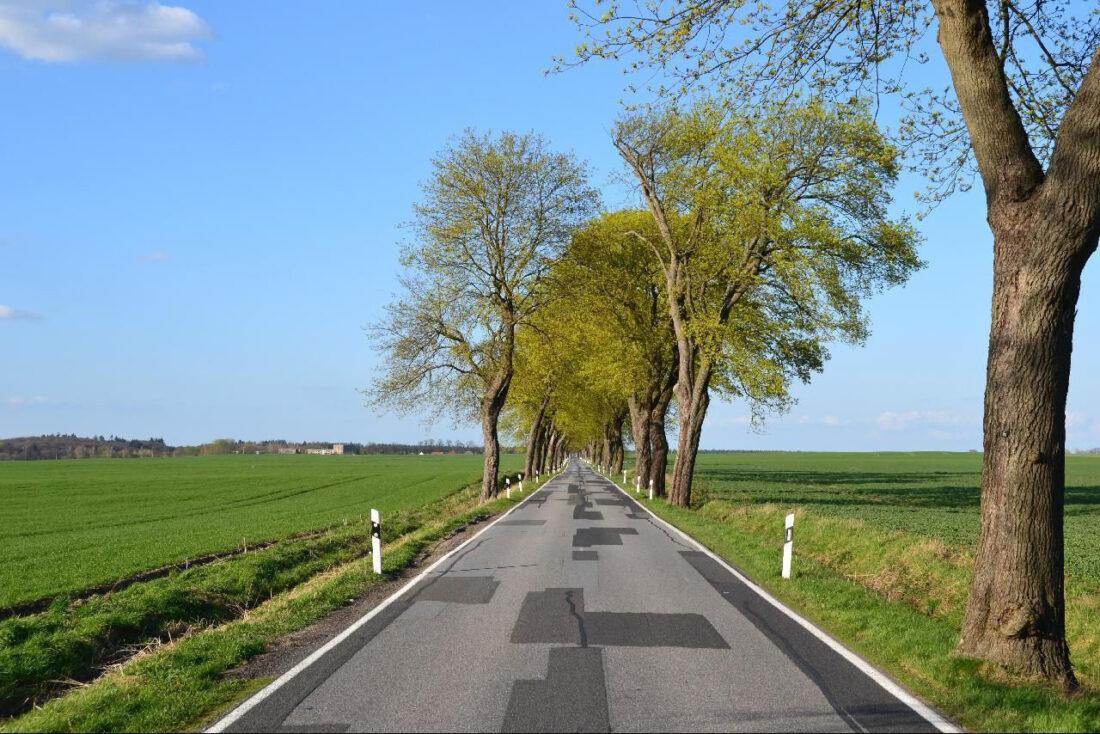
In Germany, bottom ash is used on roads under the tarmac, which, in contact with water, can lead to leakages to the surroundings.Thomas Kohler/Flickr CC BY 2.0
Industry claims that incineration is part of the circular economy and points out that very few plastics can actually be recycled. They argue it is the best available way to shrink the plastics mountain, while also reclaiming materials such as metals embedded in different kinds of waste – all while producing limited amounts of heat and electricity. Whatever it is, a circle or a straight line, it leaves a distinct, toxic signature. One that many people would rather not look for, out of fear that the alternatives are worse.
Editor: Chris Matthews
Editor: Chris Matthews

